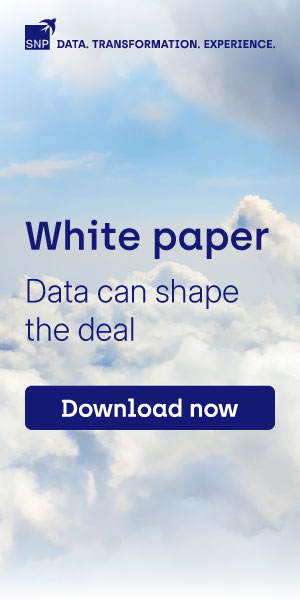Snowflake’s EMEA chief Alison Tierney on adapting to new regions and dishing data across all dimensions
Leadership comes in many forms, but it is almost always characterised by confidence, determination and a passionate belief in a mission. Although these may not be the precise terms that she would use to describe herself, they do provide some introductory insight into the way Alison Tierney tables her approach to business in her role as senior vice president for EMEA region at a data cloud named Snowflake.
Working across a territory as wide as Europe, Middle East & Africa (EMEA) is obviously not without its challenges. The question of sheer territorial scale comes immediately to mind, so how should any firm tackle operations in this region?
“As we all know, EMEA is a hugely diverse space and what works for a company in Israel may not work in quite the [same] way for a similar company in Germany. Obviously, we recognise this reality, so we look to build our own business units in each country with a hand-picked set of ingredients designed to deliver long-term success and employee wellbeing,” says Tierney.
Combining this custom-aligned approach with an appreciation for regional cultural differences is also a key part of the Snowflake mindset; the organisation has grown from just under a thousand employees in 2019, to close to the four thousand mark in 2022.
A special mix of people
“Creating that special mix of people, processes and technology in each of our worldwide headquarters is honestly the best part of my job. It’s one of the most fulfilling things you can imagine to see people flourishing, succeeding and growing at so many levels across so many diverse and different places,” says Tierney.
But people and processes can only go so far, so Tierney logically recognises and confirms that there is a point where the technology itself comes to the fore and takes the lead. In her organisation’s case, this all comes down to working with the Snowflake Data Cloud platform to deliver the company’s new breed of data workload capabilities.
A business strategist at heart, Tierney explains that she is comfortable with working at a technical level and knows a reference architecture from a command-line interface. Given the need to create conversations around data in the corporate boardroom, what kind of progress does Tierney think we have made in terms of getting the CIO, CTO and now the chief data officer (CDO) into this space to get their voice heard?
“Well, for a start, the CDO role in many organisations reports into the CIO or CTO anyway, but it’s a valid question and there is an important shift happening here,” she begins. “Now that C-suite boardroom meetings do include technology team leaders, we have the chance to show the rest of the business that IT can move from being a loss and cost centre to now exist and work as a profit centre. When a company starts to unlock the value of its data and work with it for competitive advantage, then the IT team really starts to drive the business to a higher level.”
Putting all data at your fingertips is by far the most important pillar, one place to access any data across a variety of dimensions
Another key part of her approach, from both a global and regional level, is verticalising the company’s sales organisation in order to meet where customers are, speak their language and working to address specific industry use cases. Examples include ESG, supply chain and helping customers truly mobilise their data with a 360 degree view.
“Last year, we began the process in EMEA by building a financial services sales team in the UK. After a successful pilot programme, we built out our verticalisation efforts in four months and went live across the entire region. We are continuously expanding our vertical sectors, including retail, media and entertainment, and healthcare and life sciences,” she says.
Snowflake Marketplace, let’s go shopping
Integral to these efforts is Snowflake Marketplace. This cloud-based service layer is designed to give users the ability to share data directly without moving it or wrangling with it as the sort of burdensome data workload that we might find in a more traditional database environment. Some 260 providers and more than 1300 listings are currently on the Snowflake Marketplace, so how does it really work?
Speaking specifically on this area at the company’s Las Vegas-based Snowflake Summit 2022 in June, was Unmesh Jagtap, Snowflake’s principal product manager. Jagtap explained that customers can use the Snowflake Marketplace native applications function to take advantage of a serverless deployment model for deployment provisioning flexibility, access to Snowflake’s customer base and in-app monetisation functions.
These native applications allow developers to bring together Snowflake ‘first-class objects’ like user defined functions (UDFs) and stored procedures, as well as the Streamlit integration to build data-rich applications. Given this technology proposition, how does Tierney see this work in real world use case environments and what kind of evolution does she hope this technology achieves?
“Native applications enable organisations to bring their applications directly to their customer’s data, all within the secure and governed foundation of Snowflake. This means that customers can get access to data-intensive applications, whether an enrichment application, a data clean room, or ML insights, without ever having to move or transfer that data – or give the vendor access.
“For example, our customer Goldman Sachs has built an ESG enrichment native application that customers will be able to install directly in their Snowflake accounts. The customer doesn’t have to expose their data to Goldman
Sachs or do any of the cumbersome data engineering work to prep and join the data, so Goldman can feel secure that their data is never directly accessible to the user. The application moves to the data, and both sides’ IP are protected and secure,” she explains.
It’s one of the most fulfilling things to see people flourishing, succeeding and growing at so many levels
The data-intensive application
Snowflake itself is fond of talking about what it calls the data-intensive application. We know that enterprise-scale (often mission-critical) applications today all have to shoulder a huge amount of data ingestion, processing, analytics and exchange, but Snowflake defines this application type one louder.
This is the point where applications reach a point of data-intensiveness that is an order of magnitude bigger i.e. data workloads are gargantuan (into terabytes today, but surely into petabytes and exabytes soon) and the very format of data itself spans multiple shapes and types. Where we once thought of ‘just data’ in a comparatively structured format, we now need to think about unstructured data, semi-structured data and everything in between.
If we remember that these data workloads will now span private on-premise, public and hybrid poly-multi-cloud environments in terms of where they reside and where they need to connect to, the task ahead is daunting. What comments would Tierney make in relation to Snowflake’s approach to data-intensive application technology?
“Putting all data at your fingertips is by far the most important pillar for Snowflake. This means one place for you to access any data you need across a variety of dimensions: all types – including structured tables in a database; semi-structured application logs and IoT data; and even unstructured image files, videos and documents; all sizes – with the ability to scale to multiple petabytes to exabytes; and all origins – whether it’s internally-generated, shared from partners and suppliers, purchased from third parties, or even stored in repositories outside of Snowflake,” explains Tierney.
This then encapsulates Snowflake’s technical mission and Tierney’s customer delivery and outcomes mission, i.e. it’s all about providing unsiloed access to all data to make machine learning models more accurate, insights more actionable and applications more powerful to better deliver value to business.






